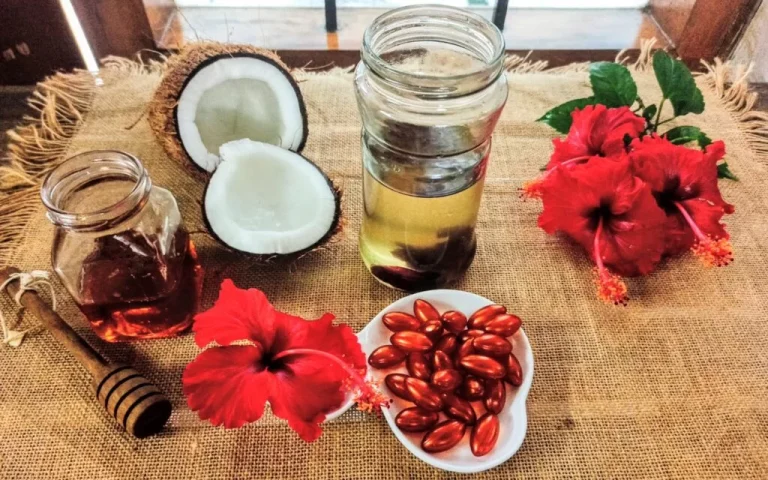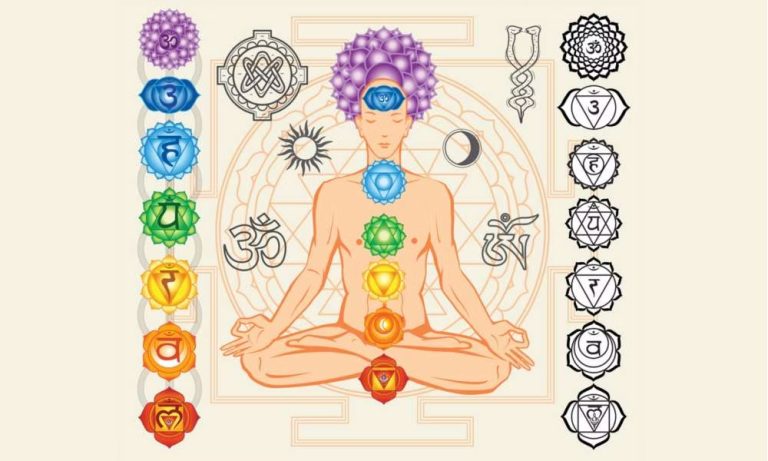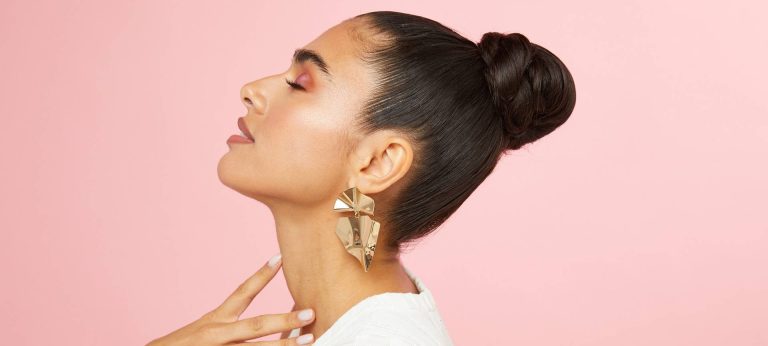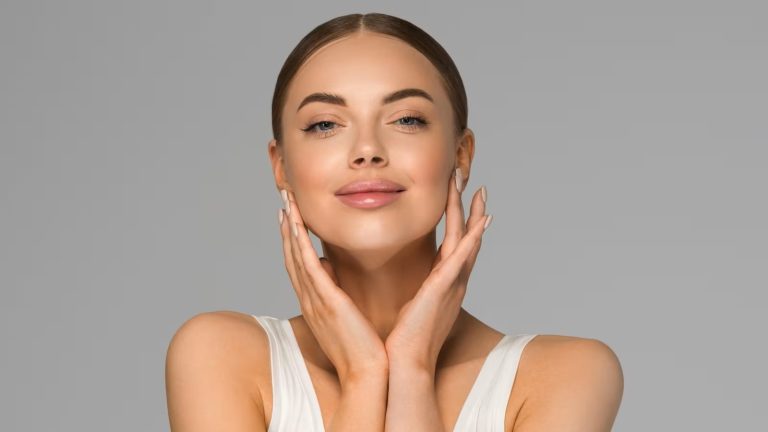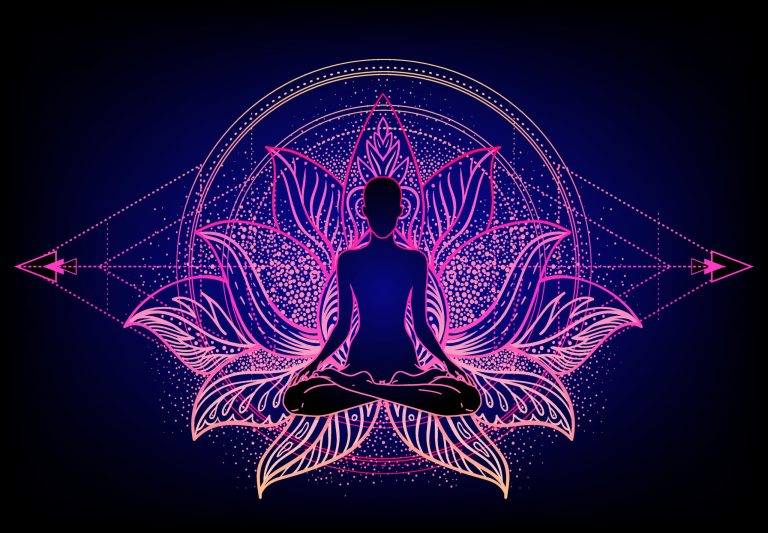
Image: Shutterstock
Ever gotten tired of your mother asking you to oil your hair? Well, turns out, you should have listened to her! An easy and effective solution for all your hair-related problems is – no surprises here – oiling your hair. Factors like pollution, stress, erratic lifestyle, and diet, among others, have contributed to several hair problems. Additionally, if the hair products you use are loaded with chemicals, that also leads to hair damage.
The best way to deal with this is to oil your hair at least twice a week. Yes, you heard it right. Oiling works wonders on your hair if followed religiously. “According to Ayurveda, the scalp is composed of different energy relieving points called marmas. Oiling the hair and scalp acts as a rejuvenation exercise and removes any excess dosha that has accumulated in the head region, releasing the stress and thereby restoring the balance,” says Dr. Partap Chauhan, Director, of Jiva Ayurveda.
He adds that apart from helping with rejuvenation oiling also strengthens the hair from the roots to the tips, providing nourishment on the whole. Get your hands on these natural ingredients and add them to your hair oil and get an instant fix from hair fall to dandruff.

1. Coconut oil

Image: Shutterstock
Coconut oil can be used as a hair mask and leave-in treatment to help hydrate and seal hair. Regular application also helps in preventing dandruff, split ends, and hair breakage. The oil helps protect the hair from external damage like pollution, heat, smoke, etc. Including coconut oil in your hair care routine may aid in the growth of longer, healthier hair.
Expert Tip: Coconut oil is good not just for the hair but also for the scalp.
2. Onion Oil

Image: Shutterstock
Onion oil is a proven remedy to boost hair regrowth and prevent breakage. The high sulphur content in onions helps in treating many hair issues. It also maintains the regular pH level of the hair, thus preventing premature greying.
How To Make: Chop some onions and curry leaves. Blend them to a fine paste. Add coconut oil to this paste and heat the mixture on a low flame. Increase the flame after five to 10 minutes and let this come to a boil. Lower the flame for 15 minutes and then turn off the heat. Set this mixture aside overnight. Strain the oil using a sieve and store the oil in a suitable container.
Expert Tip: Onion oil reduces hair fall and aids hair growth by nourishing the follicles. It is very effective in preventing and treating baldness.
3. Almond oil

Image: Shutterstock
Applying almond oil helps in the shine and softness of the hair. The oil is rich in antioxidants that help fight environmental issues and delay the ageing process for hair. Additionally, almond oil can be used to cure a flaky scalp. A small amount of almond oil applied directly to the scalp stimulates blood flow to the area and delivers potent antioxidants to the scalp’s surface.
Expert Tip: The hair smells great after applying almond oil.
4. Mint Oil

Image: Shutterstock
Increasing circulation with a vasodilator like mint oil aids in hair growth and prevents hair fall. It also leaves a fresh fragrance on your hair.
How To Make: Roughly crush some mint leaves using the back of a spoon. Place the crushed mint leaves in a jar with almond oil and leave the jar in sunlight for two to three days. Strain the oil and it is ready to use.
Expert Tip: This mint oil is antimicrobial in nature, which helps in reducing dandruff and keeps the scalp cool and clean.
5. Herbal Oil

Image: Shutterstock
Tulsi and neem help in curing scalp problems and reducing hair loss. The antibacterial and antiseptic properties of these ingredients help heal and soothe an itchy scalp and prevent dandruff.
How To Make: To prepare this oil, you need coconut oil, fresh tulsi and neem leaves along with fenugreek (methi) seeds in equal proportion. Crush them well, boil and strain the mixture. Store it in a jar.
Expert Tip: This oil helps with hair growth, prevents dandruff and dryness and nourishes the hair.
6. Lemon Oil

Image: Shutterstock
Citric acid is known for preventing hair follicles from getting weaker, thus reducing hair fall. It unclogs the pores in the scalp, thereby reducing dandruff.
How To Make: To make this perfect herbal remedy for your hair, you need to grate the lemon’s outer layer (zest). Mix it well with olive oil. Leave it in the sunlight for a few days. Strain and your herbal oil are ready.
Expert Tip: Be gentle when applying this oil to the scalp. Do a patch test before you apply this oil as this might also lead to adverse effects if it doesn’t suit your scalp.
7. Hibiscus Oil

Image: Shutterstock
Hibiscus is widely accepted for hair growth and is often used in herbal hair oils. The weekly usage of hibiscus oil strengthens the roots and prevents breakage.
How To Make: To prepare this oil, you need about eight hibiscus flowers. Grind them into a fine paste. Add the paste to a bowl and heat it with coconut oil, until the oil changes color. Turn off the heat and cool the mixture. Strain the oil and store it in an appropriate container. Your hibiscus oil is ready to use.
Expert Tip: Hibiscus oil nourishes the scalp and improves blood circulation. It also rejuvenates the scalp and increases hair growth by preventing hair loss.
8. Curry Leaves Oil

Image: Shutterstock
Rich in antioxidants, curry leaves help to strengthen the hair roots, curbing hair loss. The antibacterial properties keep dandruff at bay.
How To Make: Heat a cup of coconut oil with a handful of curry leaves in a small vessel. Using a double boiler method, heat this mixture until the oil gets coated with a black layer. Let it cool for some time. Remove the leaves and store the oil in a jar.
Expert Tip: Curry leaves are known for preventing premature greying of hair, and it reduces hair fall.
9. Black Seed Oil

Image: Shutterstock
Black seeds (black cumin) promote good scalp health. This oil has anti-inflammatory properties that help to keep the scalp clean and dry.
How To Make: Take five cups of water and two handfuls of black cumin seeds in a pot. Boil them for 10 minutes and leave the mixture to cool down. Strain the liquid and add a tablespoon of extra virgin olive oil to it. Store in a container.
Expert Tip: Black seed oil promotes hair growth, prevents premature greying, improves scalp health, restricts hair fall and moisturises dry hair.
10. Amla Oil

Image: Shutterstock
Amla, also known as Indian gooseberry, is loaded with nutrients and helps in promoting hair and scalp health.
How To Make: You will need a cup of coconut oil and deseeded amla. Grind the amla without water and strain the juice into a bowl. Boil the coconut oil and amla juice in a pan for 10-15 minutes. The mixture will turn brown. Strain it into a container and let it cool. The oil is ready to be used.
Expert Tip: Amla oil helps in preventing premature greying of hair. It also stimulates hair growth and restricts hair loss.
11. Argan oil

Image: Shutterstock
Applying argan oil helps to keep the hair and scalp well moisturized and the hair will be more resistant to environmental and daily stressors. Argan oil has been shown to reduce hair loss and promote fuller, thicker hair by treating the scalp and minimising breakage and split ends.
Expert Tip: Argan oil can double up as a leave-in conditioner.
12. Peppermint oil

Image: Shutterstock
While peppermint oil is well-known for its skin care advantages, it is also beneficial to your hair and scalp. It could assist with dryness, irritation, and other scalp issues. It also aids in increasing hair density.
Expert Tip: Do a patch test, before you include the oil in your beauty regime.
13. Castor oil

Image: Shutterstock
Castor oil’s high concentration of fatty acids and vitamin E makes it an excellent hair care product. Castor oil also aids in protein synthesis, which maintains a healthy growth and rest cycle for your hair. You’ll notice a difference in your hair’s shine and in the amount of hair loss you experience.
Expert Tip: In case you have sinuses, avoid leaving castor oil overnight on the hair.
14. Rosemary oil

Image: Shutterstock
Rosemary oil promotes hair growth by enhancing blood circulation. Thus, it could prevent hair follicles from becoming deprived of blood flow, dying, and causing hair loss.
Expert Tip: Mix rosemary with coconut oil for better results.
15. Grapeseed oil

Image: Shutterstock
Grapeseed oil, when applied to hair, offers moisture, strength, and luster. Grapeseed oil is used to treat baldness naturally.
Exert Tip: Before shampooing, try massaging a few teaspoons of grapeseed oil depending on the length of your hair, into your hair and scalp.
16. Sesame oil

Image: Shutterstock
Sesame oil contains a variety of essential nutrients for the body and hair. Using this oil on your hair and scalp may promote hair growth, make it stronger, and make it appear more lustrous.
Expert Tip: Including sesame oil or seeds in your diet can improve hair health.
17. Tea tree Oil

Image: Shutterstock
Small amounts of diluted tea tree oil applied to the hair shaft will help prevent the buildup of pollutants and dead skin. This keeps your hair healthy and hydrated, allowing it to grow normally and preventing it from falling out.
Expert Tip: Tea Tree oil, when combined with coconut oil and applied on a regular basis, aids in the prevention of dandruff.
Frequently Asked Questions (FAQs)
Q. Which oil is best for hair growth and thickness?
A. Coconut oil is the go-to oil for hair. Almond oil, black seed oil, and castor oil are considered excellent for hair growth.
Q. Which ingredients should be mixed with oil for faster hair growth?
A. Hibiscus flowers and leaves help in reducing hair fall. Onion juice is considered one of the best ingredients for restoring lost hair. Aloe vera and curry leave to aid in hair growth.
Q. Is regular oiling good for hair?
A. Depending on the type of scalp, you can choose your frequency, either once or twice a week. Ideally, oil your hair the night before you plan to wash your hair.
Q. When should I apply hair growth oil?
A. Experts recommend oiling at least twice per week, preferably the night before shampooing.
Q. Can Castor Oil Actually Help Your Hair Grow?
A. There have been no studies to back up the claim that castor oil promotes hair growth, although the oil does have some qualities that are beneficial for healthy hair.
Q. Which oil is best for falling hair?
A. Coconut oil, jojoba oil castor oil and olive oil are some of the oils recommended for hair fall.


